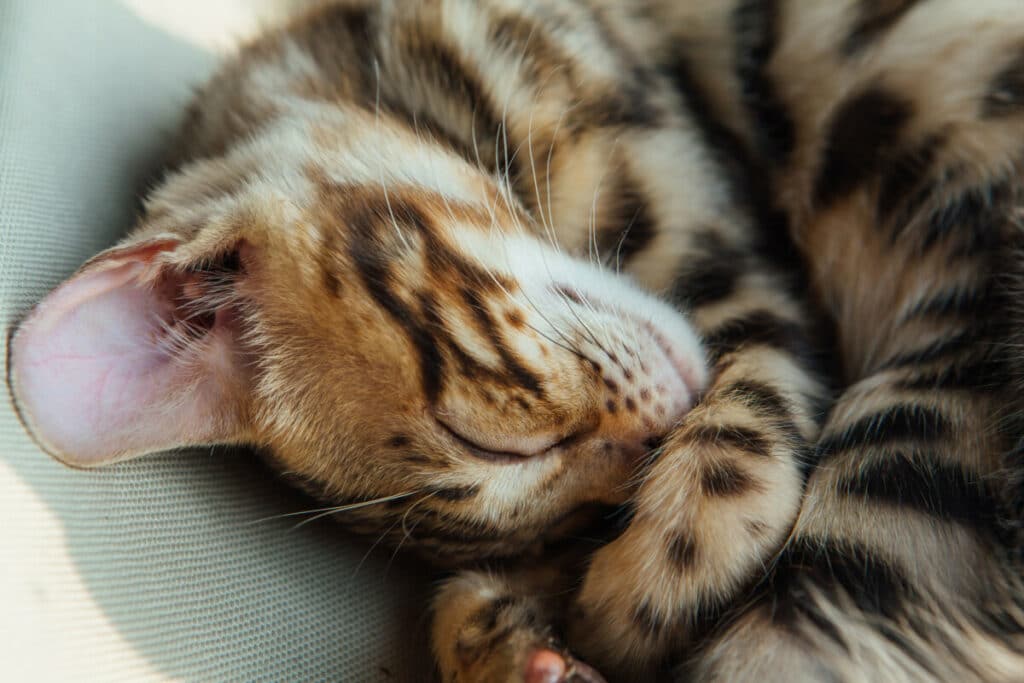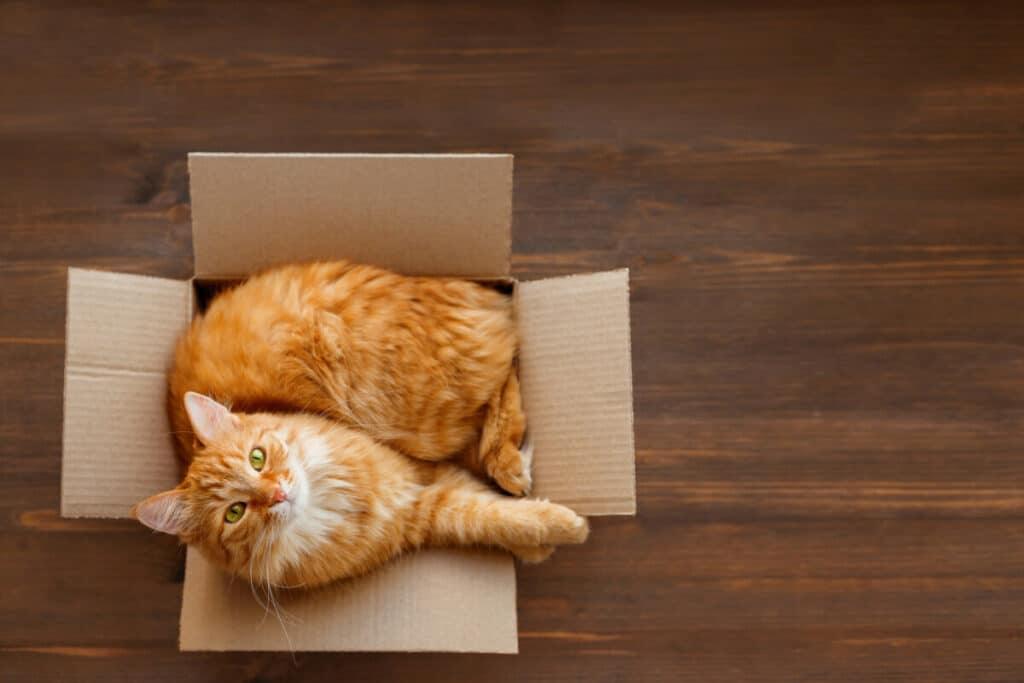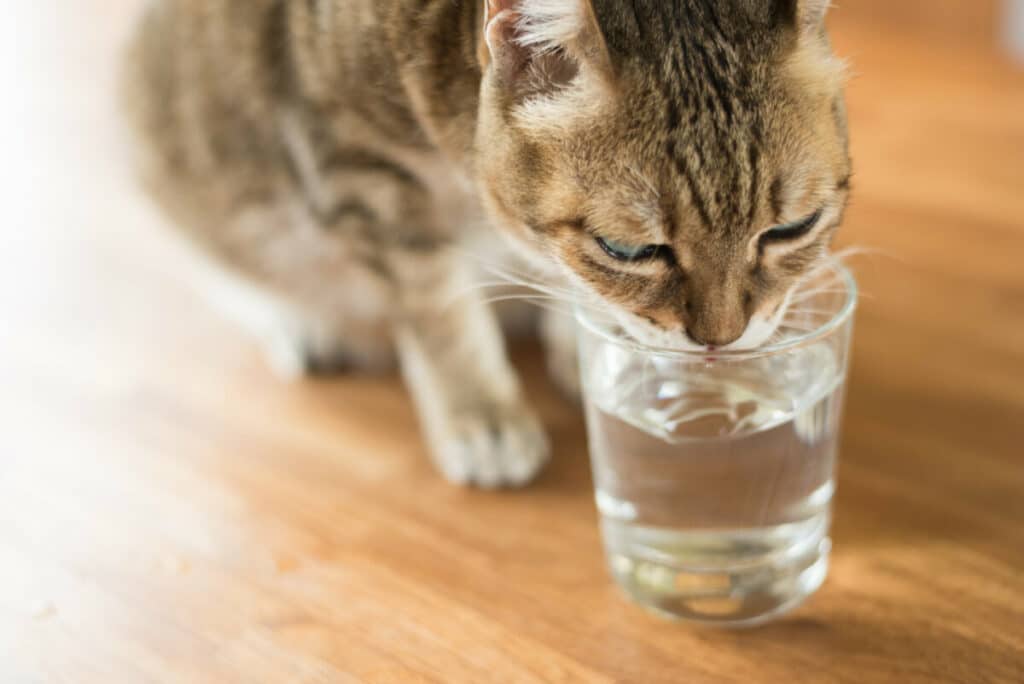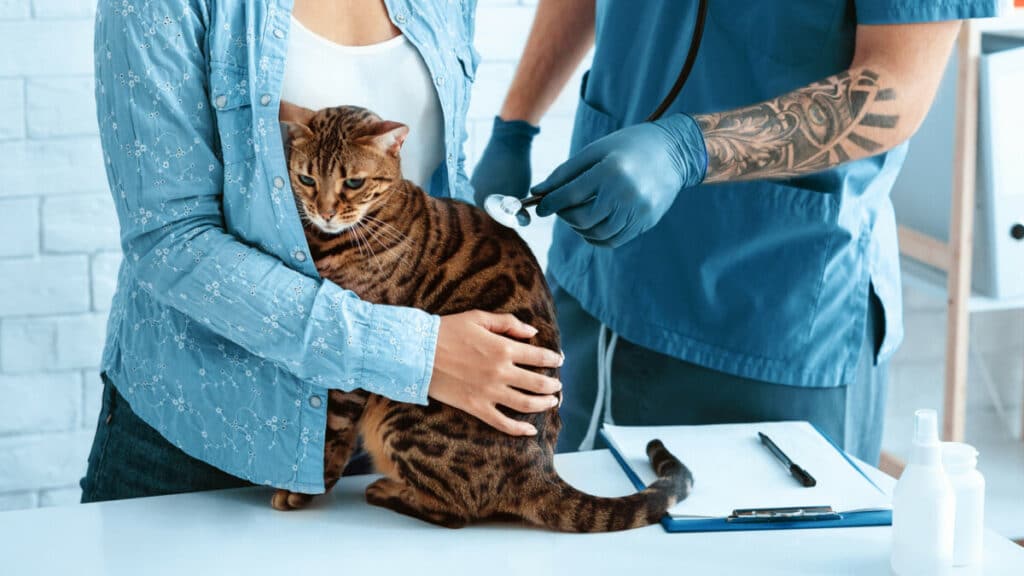
If I can safely say anything, I can say that most of us have owned or been around pets of any kind, whether it’s dogs, naked mole rats, or ferrets. In the case of cats, we can say they are cute and furry, yet independent and somewhat of a nuisance because of their natural instincts, but we love them either way. Though we love the cats we own or are around, we must realize that, like all living beings, they will pass on and should be treated well up to the end of their lifetime.
The best method to comfort a dying cat is to respect the cat’s privacy while making an educated guess of what they may need at the time such as hydration, use of soft-toned words, or reduction in surrounding noise and activities. Allowing the cat to die with dignity is the main objective overall.
This article hopes to explore methods and ways to identify a dying cat, but more importantly, how to comfort them and ways we can reduce pain and suffering for the cats. Our overall goal is to help them pass on as calm and dignified as they can be. Let’s go ahead and learn how to.
Identifying a Dying Cat
Before we can learn how to comfort a dying cat, let’s learn how we can identify if a cat is dying or, at least, know something might be wrong with the cat itself. Perhaps the most obvious sign that the cat may be dying, or suffering is the extremely low body temperature that it displays.
The animal’s normal range of body temperature is anywhere between 37 to 38 degrees Celsius or 98 to 100 degrees Fahrenheit (Source). As you can guess, anywhere that is below 37 degrees Celsius is cause for concern. Lastly, on this body temperature topic, consulting with a veterinarian on how to check the temperature is the best way to measure the temperature. If not, feeling the paw on the cat may assist if the former method is not applicable (Source).
Another indication that your cat may be dying, and may also be obvious to experienced pet owners, are their drastic changes in behavior. This behavior can range from refusing to drink and eat to being overall “lazy” with other lethargic attitudes. This can include the cat taking constant sleep and simply not grooming themselves like they usually would do.
With this, they also tend to remain alone at most times and refuse to be willingly around anyone and anything. The only thing they may want to be around at this point is perhaps their bed and other comforting areas they deem as a “resting” place. Basically, they want to hide and avoid any unnecessary interaction from the environment to not bring more strains and stress to their already fractious state.
Now for a not-so-obvious sign is the rhythmic rate of both the respiration and heart. Like all living beings, we have vital organs that enable us to function and live. When the heart and the respiratory system slow down in their beat rate, then that is a vital indication that something may be wrong and can result in death.
Normal heartbeats are about 150-200 beats per minute and breathing usually occurs at around 20-30 breathes within a minute (Source). Reduction in both of these is a strong indication of a dying cat and further professional advice on how to take action is provided by trained veterinarians.

Lastly, a dying cat will tend to smell whether is it from the lack of self-grooming, or from other sources like an overused litter box that piles up at an incredible rate relative to the normal rate a cat uses the litter box. They will stop grooming and being overall clean from themselves as well as the environment around them. The smell from their dying internal organs will be a major factor in their overall smell since toxins are being built up rather than being excreted (Source).
Respect Cat’s Privacy
Now that we have identified some basic attributes of a dying cat, how do we comfort them? As said earlier, when cats are dying, they are less motivated to interact with anything in the environment. This includes other animals, humans, and other environmental factors that may involve distracting sounds and objects that can interfere with its attempt at resting itself.
For me who has owned a hamster and a dog, and like many others, we may think that providing as much attention is a suggested method of comforting a dying animal. While this may be noble in our purpose, this is not the best method. The best method is to keep clear away from them as much as possible.
This does not mean to completely neglect the cat in its last days, but to respect their attitude towards you and anything else and allow it to peacefully choose where and when to go. Provide anything you feel the cat needs at that moment scarcely since they may be more annoyed with you than their eventual death itself.
The last thing we want to do is to put unnecessary stress on the cat. This is not comforting for the animal and should rethink this method of giving it attention. Basically, only give it attention when you feel the cat needs it. We can’t directly talk with the cat, only make inferences based on the cat’s tone and behavior, and should do it as best and respectful as possible.
Another thing you can do for the cat is to reduce all surrounding distractions and noise. As said earlier, privacy may include finding a hiding spot, using a familiar spot, or reducing uncomfortable distractions from a spot. Noise is a common environmental stimulus that we react to and can be detrimental if that noise is harsh in tone.
If noises are present, only use soft tones that soothe the hearing of the cat (Source). General activity is another one in that we should reduce our activity level in the area the cat chooses to rest in. Less activity means less noise and other distractions that promote the cat’s wellbeing.
Keeping the Cat Hydrated and Fed
Though they may already be in the dying process, there is no excuse to neglect their health and well-being. If maximum comfort for the dying cat is the goal, then we should do everything for the cat as we respect the cat’s own rights for independence.
Dehydration is common for cats as it goes along with being overall lethargic. They are no longer motivated to self-sustain themselves through eating and drinking. We may allow the eating part to be ignored but keeping them hydrated is optimal. You should not force them to drink anything.
Provide the drink and allow them to drink when needed. Again, since they are lethargic, at times, you may need to force a drink on them. Gently find ways to pour small amounts of liquid onto their mouth or even if the opportunities open themselves. Understand also, that if distress follows drinking, stop giving them a drink and let them choose what to do next.
A method you may try is to add something the cat may like such as a treat in a small quantity in the water to allow them to accept the drink while searching for the small snack (Source). Providing a tasty snack in their drink is a perfect segment for our next topic, getting your cat to eat some food.

As said earlier, food is not as required as keeping them hydrated is, but you may consider providing the cat with something delicious as its last meal. Since they are dying, you will have more freedom to allow the cat to eat whatever it wants to eat. An extra treat they would normally never get in their prime health is possibly something special for them.
You still need to consider if the food itself will cause any distress. If that’s the cause, never give them that again. For example, giving them extra tuna than usual is great, especially if you put an appealing aromatic smell to it to get them excited for something as their last meal (Source). A close friend of mine even suggests that when her cat starts to die, they will provide the cat with bits of the Twinkie cream filling as a final treat. This treat may be ok, just always consider any distress in the cat from the food and remove it.
Consider Cat’s Medical Problems
A cat may be dying, but this does not mean it is ok to neglect its health overall. We keep saying that we should allow the dying cat to have its space and only attend when needed, but we should be extra careful in how we deal with a dying cat with current medical issues that may be currently present, such as an injured paw, a fever, or scars that need bandaging.
If we are to keep the cat comforted during the dying process, then we need to make sure it dies as peacefully as we can possibly make it (Source). This means we need to either fix that broken paw in any way as it will add on to the already distressed cat is dying, or vice versa. We should do all we can to allow that cat to peacefully do what it needs to do before its eventual death.
Dying itself may not be painful for the cat, but other medical issues can bring forth this unnecessary pain. As said earlier, you may be direct and attend to a broken paw and hope that will ease the pain from the paw. However, if you are unable to directly attend to the paw, you may try other methods that would soothe the paw by providing extra comforters for the cat’s bed or resting place.
Keeping the temperature cool and at reasonable temps could possibly help as well, as well as suggested pain medication prescribed by a trained professional. Medical issues are at the forefront of pain in most creatures and dying can be second nature to this.

Overall, make sure that the inevitable death will proceed with minimal interference from other medical issues that can make dying hard for the already distressed cat.
Deep Connections are Powerful
This final segment is suggested by a friend of mine who currently works at the Upper Valley Veterinary Clinic in Rexburg, Idaho. She suggests if you have a deep connection to the cat, there are ways to comfort them effectively without being too direct. She suggests that if you have a deep connection to your cat, the cat will find comfort in you and may want to be by your side regardless of its instinct to be alone.
This doesn’t mean they want to be constantly held or groomed, but rather, would like to know you are near them. You do not have to directly comfort them, just your presence is comforting enough for them. They feel safe and protected.

Whenever the cat may be in distress and you have a deep connection with it, it may want you to attend to it regardless of the current isolated attitude it has. Again, judgment and understanding the cat’s cues are key to making optimal choices for comfort. Surprisingly, the opposite may happen.
Cats may be in distress themselves, but if they feel like you are in distress (i.e., death of a pet/friend) they may overwork themselves too much to comfort you instead. It is best to prevent such occurrences to happen since we are mainly concerned for the cat’s well-being and its final days, and do not want to make unnecessary stress for the cat that may be ignorant of its own stress for the sake of yours. This is not more common in cats than in dogs, but there have been occurrences of these moments.
Losing a cat, or any pet, is hard, especially if you are considered as a close family and friend. Hope this article helps you get an idea of how to properly treat and comfort a dying cat. It may not be easy, and it will be different between family circumstances, but always take note of the cat’s dignity and what you can do for it during its final days.

